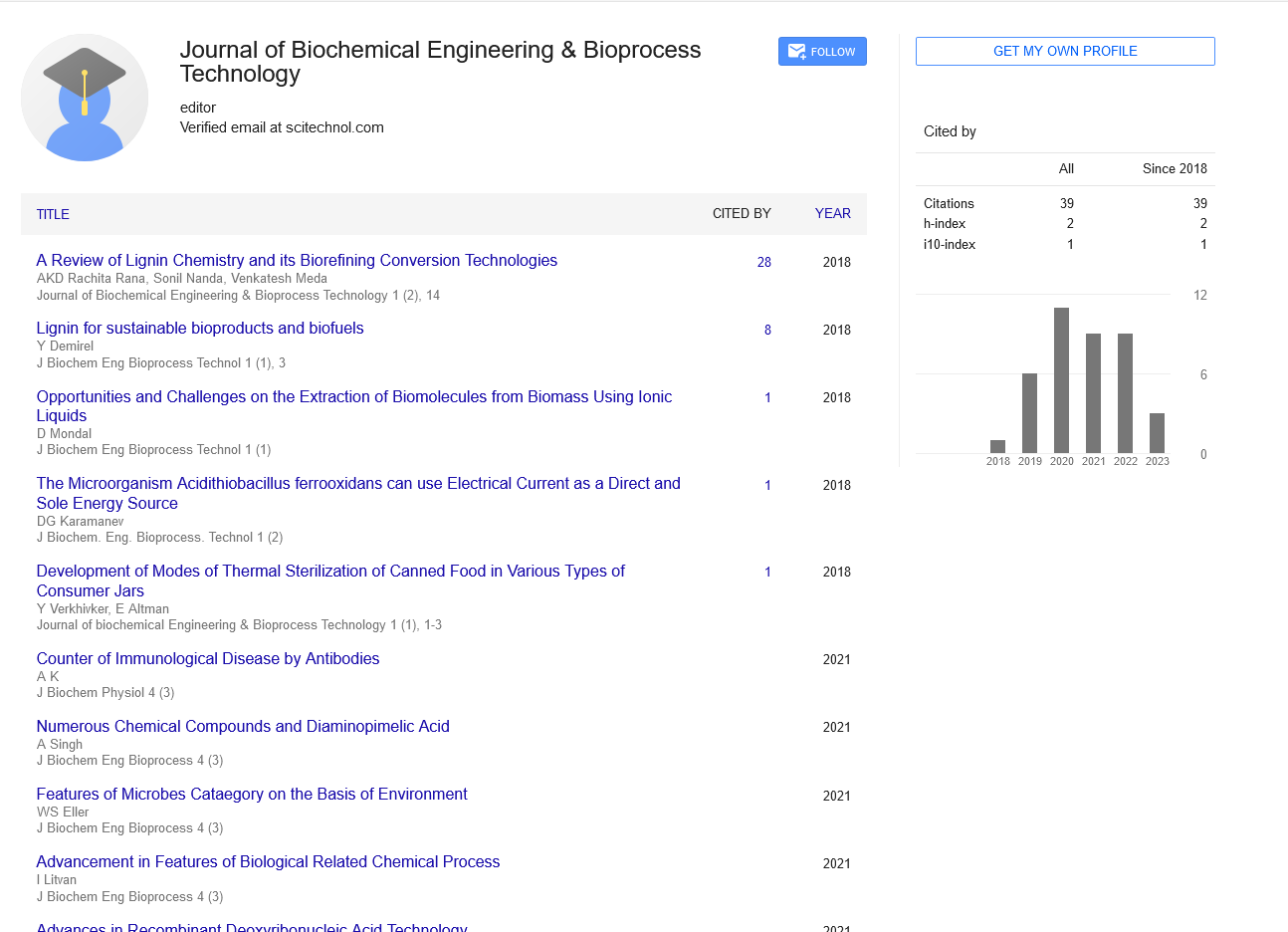Editorial, J Biochem Eng Bioprocess Vol: 4 Issue: 4
Substance Items Acquired From Petrol by Refining
Raj Sekhar*
Department of Biotechnology, Ramaiah Institute of Technology Bengaluru, India
*Corresponding author: Sekhar R, Ramaiah Institute of Technology Bengaluru, India, E-mail: sekharaj@gmail.com
Received date: July 1, 2021; Accepted date: July 16, 2021; Published date: July 22, 2021
Abstract
Petrochemicals are the substance items acquired from petrol by refining. Some synthetic mixtures produced using petrol are additionally acquired from other petroleum derivatives, like coal or flammable gas, or inexhaustible sources like maize, palm organic product or sugar stick. The two most normal petrochemical classes are olefins (counting ethylene and propylene) and aromatics (counting benzene, toluene and xylene isomers). Petroleum processing plants produce olefins and aromatics by liquid synergist breaking of petrol portions. Synthetic plants produce olefins by steam breaking of flammable gas fluids like ethane and propane.
Keywords: ethylene and propylene
Introduction
Petrochemicals are the substance items acquired from petrol by refining. Some synthetic mixtures produced using petrol are additionally acquired from other petroleum derivatives, like coal or flammable gas, or inexhaustible sources like maize, palm organic product or sugar stick. The two most normal petrochemical classes are olefins (counting ethylene and propylene) and aromatics (counting benzene, toluene and xylene isomers). Petroleum processing plants produce olefins and aromatics by liquid synergist breaking of petrol portions. Synthetic plants produce olefins by steam breaking of flammable gas fluids like ethane and propane. Aromatics are created by reactant improving of naphtha. Olefins and aromatics are the structure blocks for a wide scope of materials like solvents, cleansers, and cements. Olefins are the reason for polymers and oligomers utilized in plastics, tars, filaments, elastomers, greases, and gels. Worldwide ethylene creation was 190 million tons and propylene was 120 million tons in 2019. Aromatics creation is roughly 70 million tons. The biggest petrochemical businesses are situated in the USA and Western Europe; notwithstanding, significant development in new creation limit is in the Middle East and Asia. There is generous between provincial petrochemical exchange. Petrochemicals are transcendently made in a couple of assembling areas all throughout the planet, for instance in Jubail and Yanbu Industrial Cities in Saudi Arabia, Texas and Louisiana in the US, in Teesside in the Northeast of England in the United Kingdom, in Rotterdam in the Netherlands, in Jamnagar, Dahej in Gujarat, India and in Singapore. Not the entirety of the petrochemical or item synthetic materials created by the substance business are made in one single area however gatherings of related materials are frequently made in contiguous assembling plants to instigate modern advantageous interaction just as material and utility proficiency and different economies of scale. This is referred to in compound designing phrasing as incorporated assembling. Strength and fine compound organizations are in some cases found in comparable assembling areas as petrochemicals at the same time, much of the time, they needn't bother with a similar degree of huge scope framework (e.g., pipelines, stockpiling, ports, and power, and so on) and hence can be found in multi-area business parks. Olefins incorporate ethene, propene, butenes and butadiene. Ethylene and propylene are significant wellsprings of modern synthetics and plastics items. Butadiene is utilized in making engineered elastic. Aromatics incorporates benzene, toluene and xylenes, overall alluded to as BTX and principally acquired from petrol treatment facilities by extraction from the reformate created in reactant reformers utilizing naphtha got from oil processing plants. On the other hand, BTX can be created by aromatization of alkanes. Benzene is a crude material for colors and manufactured cleansers, and benzene and toluene for isocyanines MDI and TDI utilized in making polyurethanes. Makers use xylenes to create plastics and engineered filaments. Amalgamation gas is a combination of carbon monoxide and hydrogen used to make alkali and methanol. Alkali is utilized to make the manure urea and methanol is utilized as a dissolvable and synthetic middle. Steam saltines are not to be mistaken for steam transforming plants used to create hydrogen and alkali. Methane, ethane, propane and butanes got essentially from petroleum gas preparing plants. Methanol and formaldehyde.
The enormous scope petrochemical fabricating areas have groups of assembling units that share utilities and huge scope foundations, for example, power stations, stockpiling tanks, port offices, street and rail terminals. In the United Kingdom, for instance, there are 4 fundamental areas for such assembling: close to the River Mersey in North West England, on the Humber on the East shoreline of Yorkshire, in Grange mouth close to the Firth of Forth in Scotland, and in Teesside as a feature of the Northeast of England Process Industry Cluster (NEPIC). To show the bunching and incorporation, some half of the United Kingdom's petrochemical and item synthetic substances are created by the NEPIC business group organizations in Teesside. Like item synthetic compounds, petrochemicals are made for a huge scope. Petrochemical fabricating units contrast from item synthetic plants in that they frequently produce various related items. Contrast this and forte substance and fine synthetic assembling where items are made in discrete bunch measures.
 Spanish
Spanish  Chinese
Chinese  Russian
Russian  German
German  French
French  Japanese
Japanese  Portuguese
Portuguese  Hindi
Hindi 